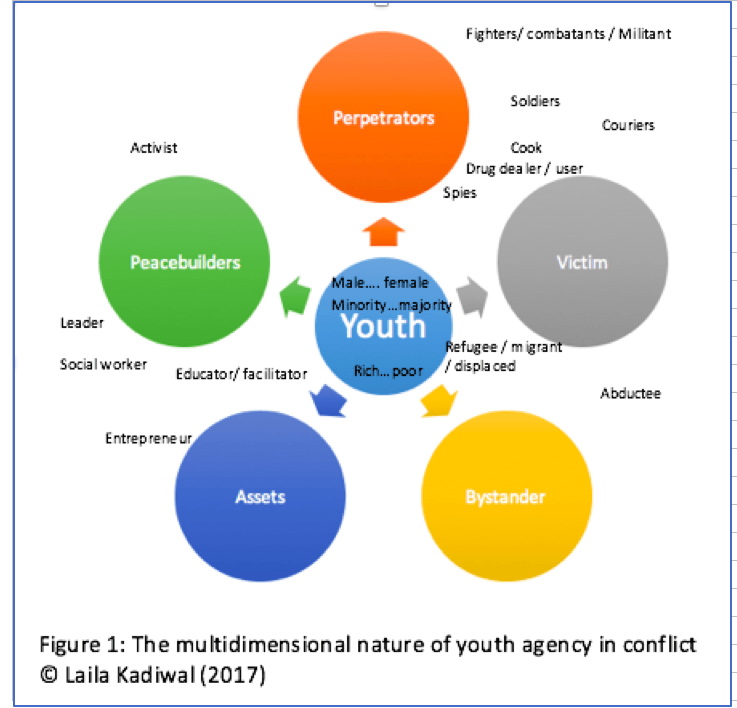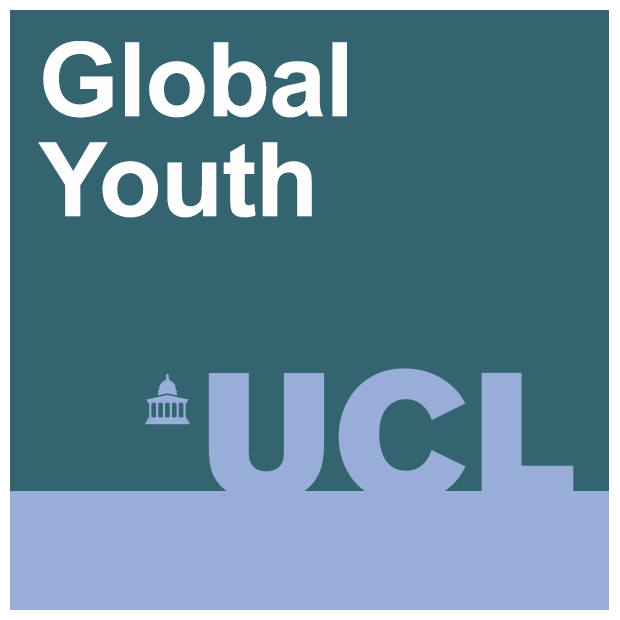The multiple roles that young people play in conflict-affected contexts
By Dr Laila Kadiwal, on 2 June 2017
Increasingly, attention is being directed internationally to the important role of youth in violence and conflict. In my research with the Research Consortium on Education and Peacebuilding on youth in armed conflict-affected settings, I have noticed that there are five roles that are commonly ascribed to young people in contexts of violent conflict.

Youth as perpetrators of violent conflict: This perspective sees young people as risks, threats and active agents in perpetuating conflict and in undermining national or international security. Youth are often described as soldiers, combatants, fighters, terrorists, militants, rebel, abductors, suicide bombers, drug dealers, gang members, violent extremists, and criminals.
Youth as victims in violent conflict: Conflict affects young people negatively in many ways. According to recent figures, more than 25 million young people are currently living in crisis situations (UNICEF 2016). Conflict violates their basic human right – namely, ‘the right to life, liberty and security of person’. They are at increased risk of being killed, injured, orphaned, abducted, or raped in conflict. They are also often forced into roles that make them even more vulnerable, such as: providers of sexual services, couriers, cooks, spies, child soldiers, unwilling abductees and suicide bombers. Most of the young people in zones of conflict are cut off from sustained humanitarian aid and basic services. Studies suggest that conflict hugely harms young people even psychologically as they experience strong feelings of guilt, fear, desire for vengeance and an overwhelming sense of loss and hopelessness in conflict.
Youth as bystanders in peace processes: This perspective views youth mainly as passive onlookers in conflict and peace processes. Many conflict contexts do not have the institutional apparatuses, resources, and /or political will to involve young people or address youth issues, which results in a marginalization of youth from dialogue and reform. Youth are frequently accorded an implicit and indirect place within broader international and governmental initiatives (Lopes Cardozo, et al. 2016).
Youth as an asset in peace processes: Despite this, a substantial policy discourse, promoted more recently by international and local actors, revolves around viewing young people as resourceful agents for rebuilding communities, state and society. Young people are characterized as leaders, ‘capital’ and assets. The findings of the Research Consortium on Education and Peacebuilding from four conflict contexts suggest that the economic dimensions of youth agency receive the most emphasis within the broader national and international economic policies. Youth is often narrowly conceived as an economic asset, whose primary role is to support the neoliberal agenda of the national and international elites rather than as critical agents who question the very basis of inequalities and conflict.
Youth as peacebuilders: This perspective views a youth as a transformative agent, who mitigate social, economic and political drivers of conflict for just and sustainable peace. The characterisation of youth as peacebuilders does not reductively see their role as merely ensuring ‘negative peace’ (as the absence of war and violence), or ‘liberal peace’ (as the promotion of democracy and free trade) but enables them to play a critical role in challenging the root causes of violent conflict. It is this role which receives the least attention in contemporary peace processes.

Problems with the descriptions of youth in conflict
While the above labels serve as analytical categories, in practice their application is contextual, incoherent, and problematic in at least three ways.
First, in different contexts and settings, a youth may simultaneously play multiple roles. An armed youth could be seen as both a terrorist and a victim of the broader structure. This means that youths’ peacebuilding agency cannot be understood in isolation to how their surroundings influence them and in turn how they influence their environment.
Secondly, different actors ascribe different labels to the youth depending on their interests and agenda. For instance, earlier this year, I attended a Sikh Vaisakhi festival at a Gurudwara (a Sikh place of worship) near London. Inside, I saw photos of young men that were killed in a violent conflict with the Indian army during the 1970s and ‘80s. While the Sikh diaspora of this Gurudwara venerated these youth as holy martyrs, who sacrificed their lives for an independent Sikh homeland, the state of India view them as militants whose separatist rebellion threatened the national integrity.
Thirdly, different notions of peace underpin different assumptions about the role of youth in conflict. Whether peace means maintaining security, promoting free trade, implementing democracy or promoting a more transformational process determines how the role of youth is viewed in peace process.
In short, youth are simultaneously seen as threats, victims, bystanders, assets and socially conscious actors in conflict and peace processes and these contrasting views tell us of the very different (and often contradictory) roles that are ascribed to young people in conflict by different actors.
 Close
Close



